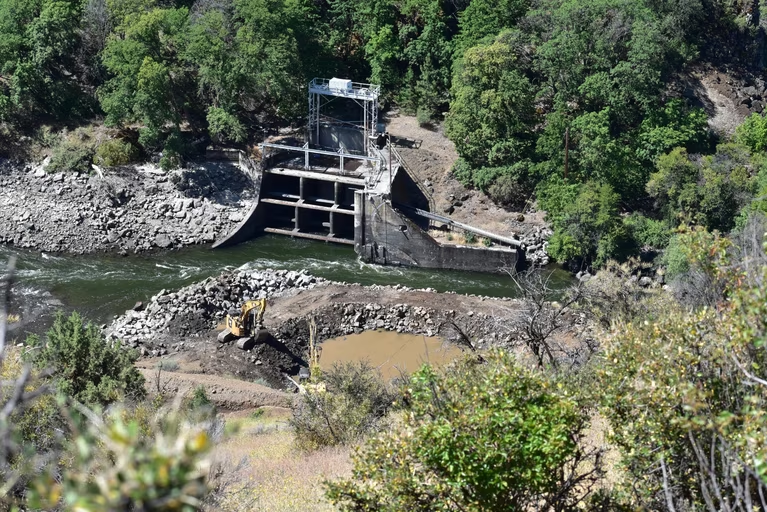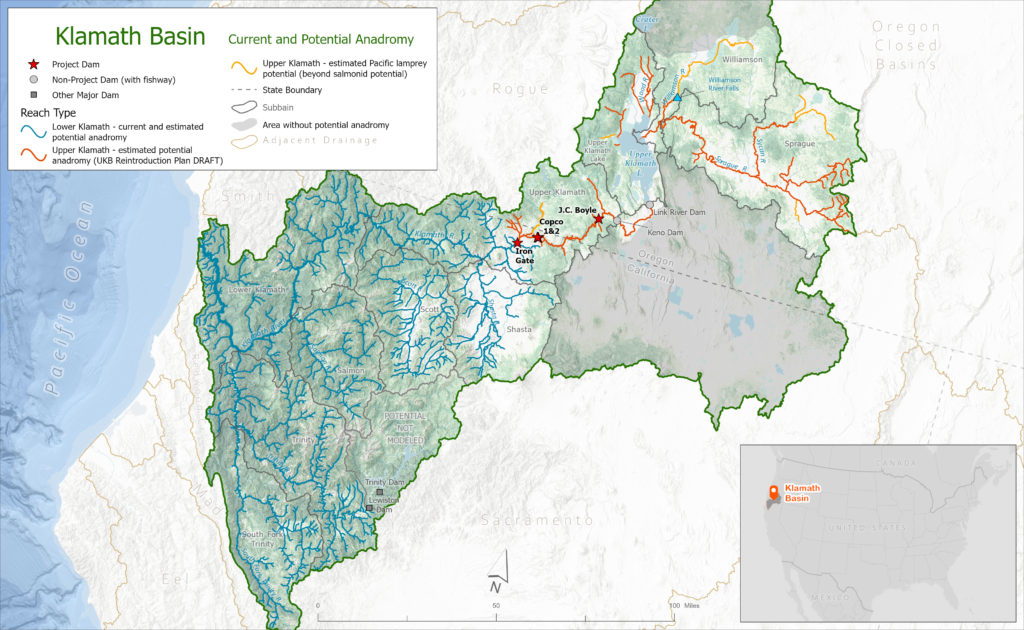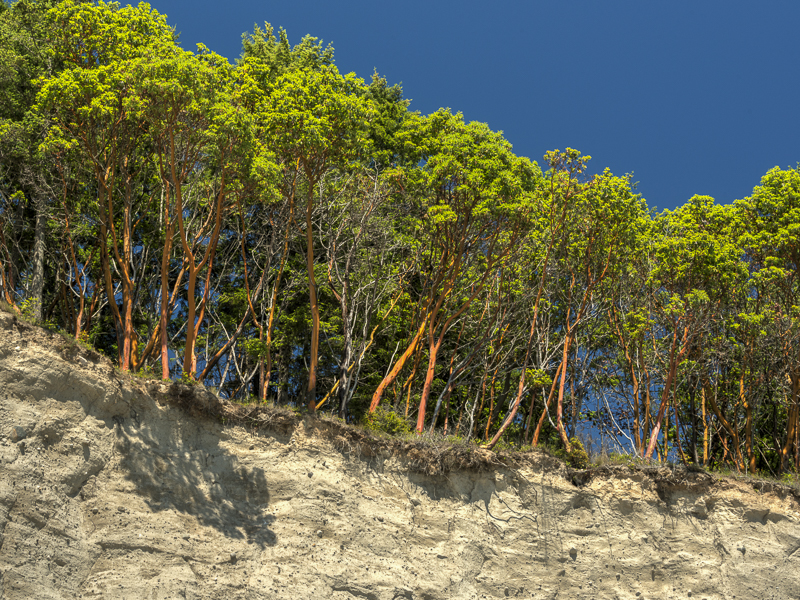Dam removal on the Klamath River has begun at last.
Crews have largely demolished Copco 2, the smallest of the 4 dams on the chopping block. The reservoirs behind Iron Gate, Copco 1 and J.C. Boyle will be drawn down next winter allowing further dam removal to begin in spring of 2024. Oregon Public Broadcasting has provided a nice summary of how the dam removal process will work.

Remnants of Copco 2 – the smallest of the Klamath Dams. Photo Juliet Grable / JPR
The impetus for removal of the 4 Klamath Dams is the 2002 “fish kill”, when tens of thousands of spawning salmon died as a result of degraded water quality and high temperature on the lower reaches of the river.
Dam removal will help salmon in two ways. The nutrients in runoff from upstream farms will no longer “cook” in the hot reservoirs, so water quality will be improved. In addition, salmon will have access to additional spawning habitat. Truly measuring the success of the program will take some time, but water quality measurements will come soon and speculation will be impossible to resist.

The Klamath dam removals are all near to the Oregon-California border, downstream of the farms in the Klamath Basin. The Karok, Yurok and Hoopa Valley reservations are closer to the coast. The middle section of the river is popular for fishing, rafting and swimming. It is all beautiful country. (Click image to enlarge)
Restoration of the Klamath’s salmon populations are particularly important to tribes on the lower Klamath – the Hoopa Valley, Yurok and Karok Tribes have depended on salmon for sustenance and culture for millennia.
Dam removal will provide benefits to tourists as well. If you haven’t been to the Klamath, check it out. The 120 mile drive from Highway 5 to Weitchpec is spectacular. The fishing, swimming and rafting are all great and there are oodles of campgrounds.

The stands of giant madrone trees along the Klamath are especially impressive.
Unlike Hetch Hetchy, the Klamath dams are not part of any municipal or agricultural water supply system – they are all downstream of the farms in the Klamath basin. Roughly 696 gigawatt-hours of hydropower will need to be replaced annually – about twice the amount that will be lost when Hetch Hetchy is restored.
Replacing electric power costs money, but it’s institutionally simpler than improving water supply and it’s easier to find alternatives. Many water agencies in California have reaped tremendous financial and supply benefits by working together. San Francisco, however, has not pursued opportunities to work cooperatively with the Turlock and Modesto Irrigation Districts or others who use the lion’s share of the Tuolumne River – something it should be doing even though it has no intention (presently) of giving up Hetch Hetchy Reservoir.
At Restore Hetch Hetchy, we recognize that our challenge, at least politically, is greater than that of the Klamath tribes and restoration advocates. But it’s wonderful to see dam removal and such a restoration program finally underway.
